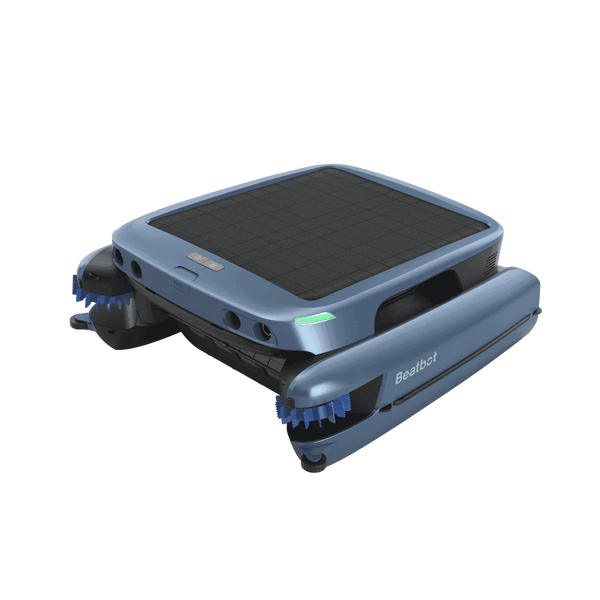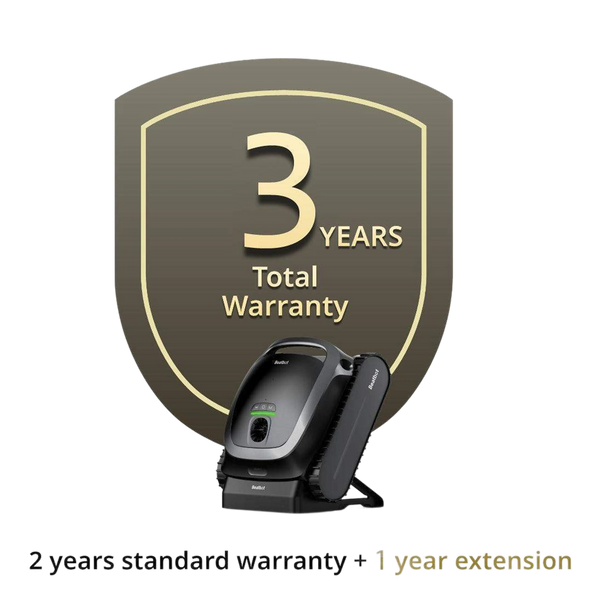Maintaining a Saltwater Pool: The Ultimate Guide
It is a luxurious and refreshing swimming experience with saltwater pools, yet proper maintenance is vital to keep them clean and inviting. A robotic pool cleaner is one of the most effective ways to maintain a saltwater pool. We will discover the critical steps in this guide to effectively maintain a saltwater pool and delve into the benefits of using a robotic pool cleaner.
Table of content
Understanding Saltwater Pool Maintenance
Maintaining a saltwater pool involves a series of essential tasks to ensure the water is clean, safe, and inviting for swimmers.
Routine maintenance consists of skimming the pool's surface to eliminate debris and brushing the walls and tiles to deter the accumulation of algae.
Additionally, it entails vacuuming the pool floor to remove dirt and sediment. Additionally, monitoring and adjusting the pool's pH and chlorine levels are vital for water clarity and swimmer comfort. Proper water balance enhances water quality and promotes the longevity of pool equipment and accessories.
By staying on top of these maintenance tasks, pool owners can guarantee an enjoyable and secure swimming environment in their saltwater pools.

The Role of Robotic Pool Cleaners
Robotic pool cleaners have transformed pool maintenance by offering unparalleled efficiency and convenience.
These intelligent devices are engineered to navigate the pool autonomously, thoroughly scrubbing and vacuuming debris from all surfaces, including floors, walls, and waterlines.
Beatbot AquaSense Pro, as the only robotic pool cleaner till now, can even skim on the water surface to clear the floating debris.
Equipped with advanced filtration systems, robotic pool cleaners ensure that the water remains crystal clear while significantly reducing the need for manual cleaning efforts. Their ability to reach and clean hard-to-access areas makes them indispensable for maintaining a saltwater pool's pristine condition.
Choosing the Right Robotic Pool Cleaner
When choosing a robotic pool cleaner for the saltwater pool, consider factors such as pool size, shape, and surface type.
Look for models with energy-efficient operation and accessible maintenance features. Advanced models often feature intelligent navigation technology, allowing them to map the pool and optimize cleaning paths for maximum efficiency.
Some units like Beatbot AquaSense 2 Pro offer smartphone app connectivity for convenient operation, further streamlining the pool maintenance process.
By carefully evaluating these features, pool owners can choose a robotic pool cleaner best suited to meet the specific cleaning needs of their saltwater pool.
Maintaining Water Balance and Circulation
In addition to leveraging robotic pool cleaners, maintaining optimal water balance and circulation is fundamental for preserving water quality in a saltwater pool.
This includes optimizing pump operation, inspecting and clearing potential clogs in the filtration system, and ensuring adequate water circulation throughout the pool. Regular backwashing of the filter and periodic shock treatments play a pivotal role in maintaining water clarity and hygiene, preventing the accumulation of contaminants and impurities. By upholding proper water balance and circulation, pool owners can ensure a healthy, enjoyable swimming environment in their saltwater pools.
Maintaining Water Balance and Circulation in a Saltwater Pool involves several key steps:
Step 1: Optimizing Pump Operation:
Ensure that the pool's pump functions optimally to facilitate proper water circulation. Check the pump regularly for malfunction and ensure it runs efficiently to maintain water circulation.
Step 2: Inspecting and Clearing Potential Clogs:
Inspecting and clearing potential clogs in a pool's filtration system involves several key aspects:
1.Regular Inspection:
Conduct routine inspections of the skimmer baskets, pump baskets, and pool filters to identify any signs of debris accumulation or blockages. This proactive approach helps prevent clogs from impacting the efficiency of the filtration system.
2.Clearing Debris:
Remove any collected debris from the skimmer and pump baskets as part of your regular maintenance routine. This prevents blockages that could impede water flow and strain the pool pump.

3.Cleaning Pool Filters:
Depending on the type of pool filter (e.g., sand, cartridge, or diatomaceous earth), follow the manufacturer's guidelines for cleaning and maintenance. For example, if you have a cartridge filter, periodically remove and clean the cartridges to remove trapped debris. Similarly, backwash a sand filter or thoroughly clean a diatomaceous earth filter as recommended.
4.Addressing Potential Blockages:
If you notice reduced water flow or suspect a blockage within the filtration system, investigate the issue promptly. Clear any obstructions within the filter housing, plumbing lines, or other components to restore proper water circulation and filtration.
Step 3: Ensuring Adequate Water Circulation:
Proper water circulation prevents stagnation and helps distribute chemicals evenly throughout the pool. This can be achieved by positioning return jets to promote effective water movement and utilizing pool brushes to avoid sediment buildup in corners and dead spots.
Step 4: Regular Backwashing of the Filter:
Backwashing the pool filter at regular intervals is crucial to remove accumulated debris and restore its filtering efficiency. Follow the manufacturer's guidelines for your specific filter type and conduct backwashing as recommended.
Step 5: Periodic Shock Treatments:
Periodic shock treatments help oxidize organic contaminants, eliminate chloramines, and restore water clarity. Use a pool shock product designed for saltwater pools per the manufacturer's instructions to maintain balanced and sanitary pool water.
Embracing Efficiency with Robotic Pool Cleaners
Integrating robotic pool cleaners into saltwater pool maintenance routines represents a significant advancement in efficiency and effectiveness. These cutting-edge devices are designed to optimize the cleaning process, ultimately enhancing the overall swimming experience for pool owners and their guests.
Robotic pool cleaners can streamline maintenance tasks and promote environmental sustainability through decreased energy usage and reduced reliance on chemicals. Their advanced filtration and cleaning systems efficiently eliminate debris, algae, and other impurities from the pool water, decreasing dependence on traditional, chemical-heavy cleaning methods. By promoting water clarity and purity, these cleaners help minimize the need for additional chemical treatments, contributing to a healthier and more eco-friendly pool environment.
Furthermore, by reducing manual cleaning requirements, robotic pool cleaners lead to lower water and energy consumption compared to conventional pool cleaning methods. This results in cost savings and an eco-friendly impact, making them an environmentally responsible choice for conscientious pool owners.
Conclusion
Effectively maintaining a saltwater pool involves a combination of regular upkeep, water balance management, and efficient cleaning technologies.
Robotic pool cleaners play a pivotal role in simplifying maintenance tasks and preserving the pristine condition of saltwater pools, making them a valuable investment for pool owners seeking convenience and excellence in aquatic leisure. With proper maintenance and the assistance of robotic pool cleaners, you can ensure that your saltwater pool is always a relaxing and enjoyable place.
Relative Blogs
About the author



















